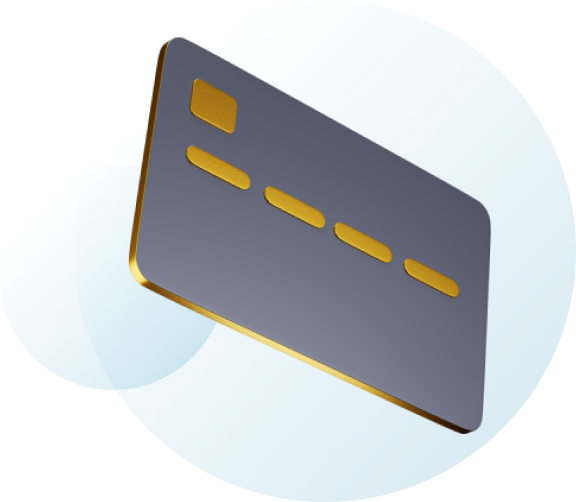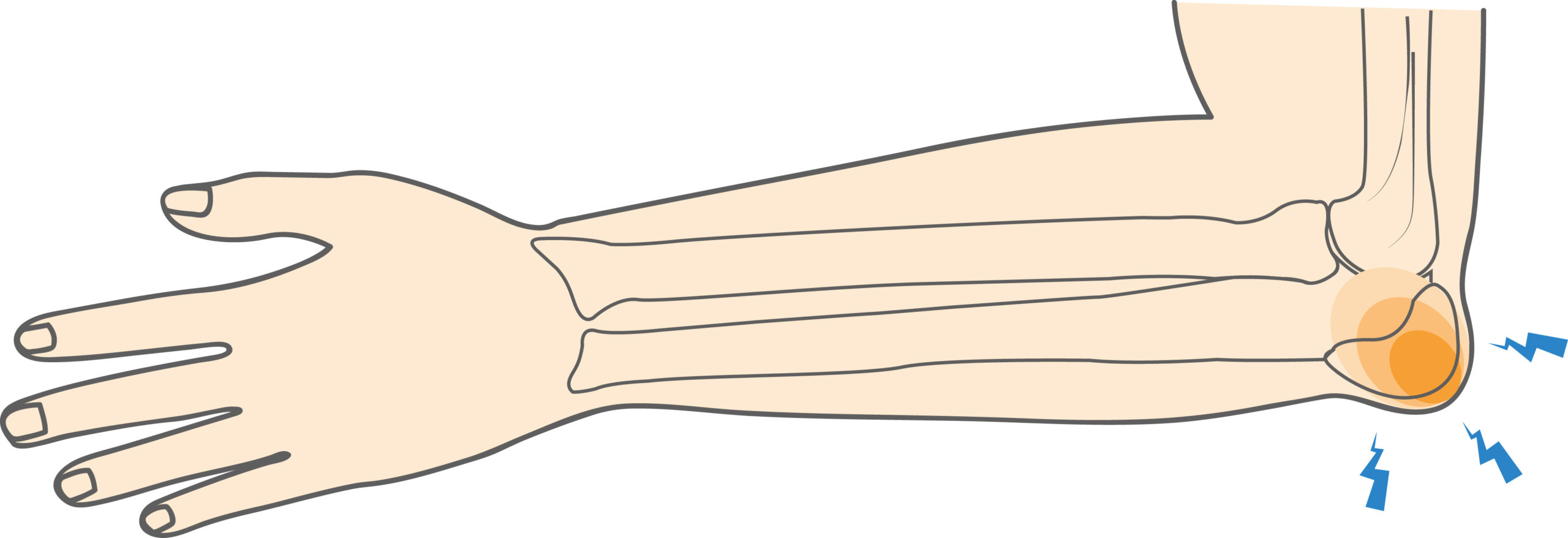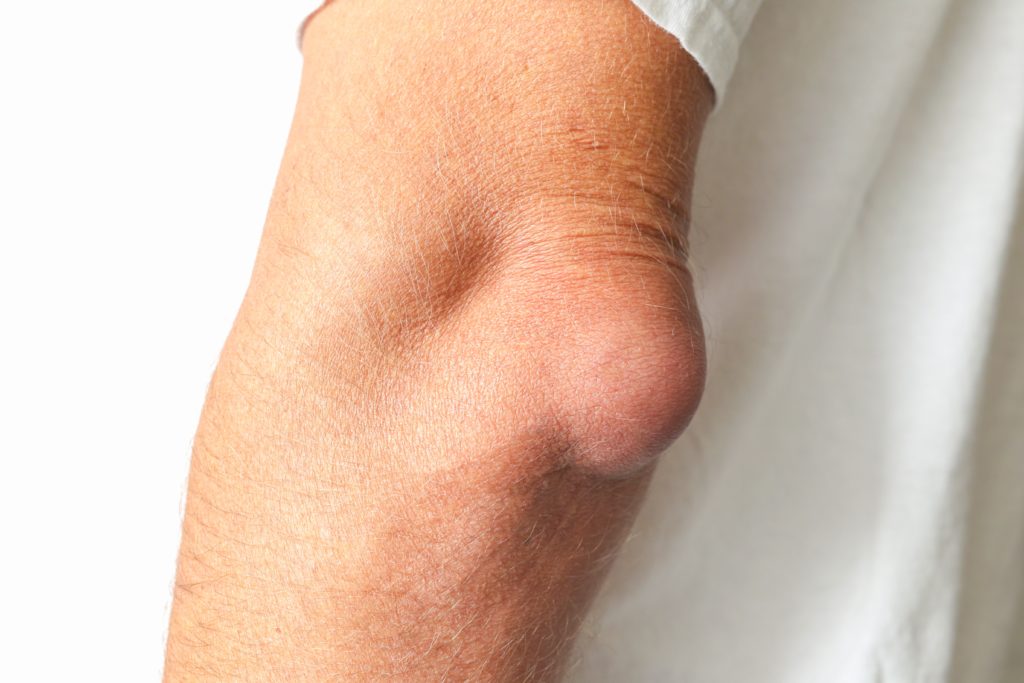Olecranon bursitis can often be treated at home. However, occasionally you may need to seek treatment for elbow bursitis. If you experience a fever or feel sick along with swelling behind the elbow, your bursitis may be caused by an infection called septic bursitis. See your doctor if you experience these symptoms.
You should also schedule a medical appointment if you don’t have a fever, but your elbow worsens. A physical examination will be conducted to see if there is a tender, swollen area behind the elbow and assess your range of movement.
Your doctor may also order an x-ray to see if you have a fracture or bone spur. An ultrasound may also be helpful to show fluid sac inflammation in the olecranon bursa.



